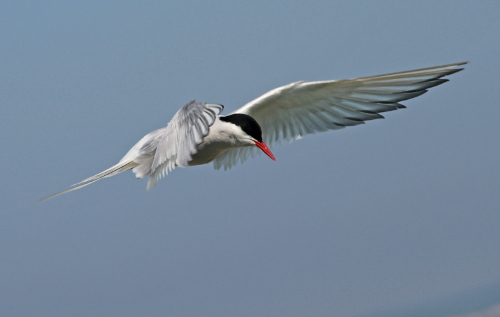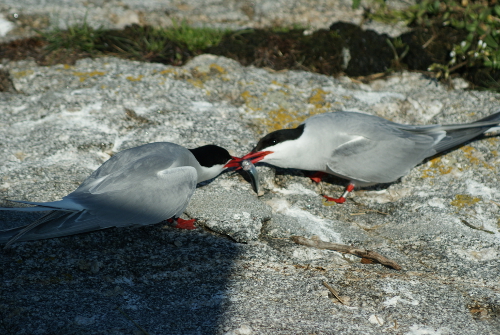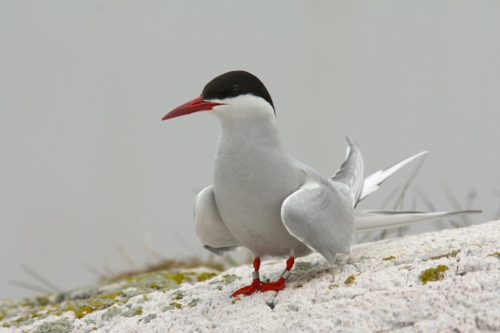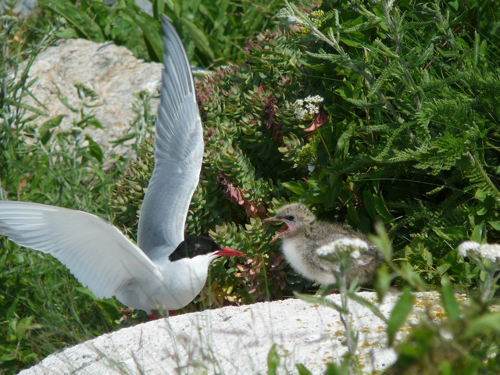Consider the planet. This planet. I love sci-fi more than many, but I relegate terraforming to hopeful speculative fiction for at least the next few centuries. This planet, this Gaia, she's what we've got, she's where we belong, she's big and beautiful, and she needs our attention.
Happily, in addition to the myriad ways anyone can appreciate life on Earth, we have a website fully devoted to this planet, its people, and its many creatures -- in real time, in hi-def, and if you can read this post you can check it out.
It's explore.org, an appropriately defined "portal into the soul humanity" where human rights meet animal rights meet ways of sustaining life on the aforementioned very nice planet. Supported by the Annenberg Foundation, it's a smart, informative, ever-expanding -- well, it's more than a site, really: an experience -- featuring multicultural, philanthropic, truly exciting ways to, yes, explore the world, starting from your desktop, laptop, or gadget. I love their slogan: "Never stop learning."
Live HD "Tern-cam" from explore.org
Leaping to the point, let us begin with some of the most ambitious world-travelers the world has ever known: the relatively tiny species known colloquially as the Arctic Tern. I'm not an ornithologist (nor do I play one on TV), but these birds are astounding. And presently, on islands along the coast of Maine, these birds' eggs are hatching into absolutely adorable chicks -- live, up close, on explore.org.

Serious traveler: the Arctic Tern (photo by Eric Snyder)
That may sound provincial and cute, a treat for birdwatchers or possibly retirees, but dig the backstory: On each day of their fall migration, these little birds (you could hold one in your hand) fly an average of about 300 miles, covering a total of over 27,000 miles. Hello, frequent fliers! The Arctic Tern's annual migration totals about 55,000 miles, and they can live over 30 years. Meaning? During their lives, Arctic Terns are estimated to fly the equivalent of 66 times around this planet -- or three round trips to the moon!
Impressive. Very impressive.

Tern-ing each other on (photo by Kate MacNamee)
But there are new and ever-changing challenges -- for both the tern and the planet.
Some information for this article comes thanks to the Maine Coastal Islands NWR (National Wildlife Refuge), whose representative Lisa Welch notes that, "While U.S. Fish and Wildlife Service and National Audubon Society seabird managers are doing all they can to provide suitable habitat and control predators on Arctic Tern colonies in Maine, we have little influence over factors that affect successful migration. What happens if the abundance and distribution of critical food resources are changing because of climate change? Will the birds be able to find enough food to fuel their bodies during migration?"
And here we have our planet. The Arctic Tern makes a brilliant control specimen for contemplating, generally, factors such as climate change, overfishing, deforestation, pollution, and (usually) man-made and often highly destructive changes to habitats around the world. Frankly, this bird is no longer finding the herring it needs to feed the kids (and itself); and some scientists speculate that this is due to global warming, with fish departing the gradually warming waters of locations like Maine, and heading for regions of colder water near the poles.

Where Arctic Terns come from (photo by Nathan Banfield)
Meanwhile, it's pretty amazing what this bird can do: After nesting on islands in the Gulf of Maine (as it is doing right this minute; you can watch and comment), the Arctic Tern migrates west to Nova Scotia, then takes off over the Atlantic for, depending on trajectory, a variety of locations. They tend to hit farflung marine-bird hotspots such as a region between Nova Scotia and Spain, then cross over Europe, down the west coast of Africa, and then tuck in for some antipodean vacation fun along the east coast of South America and the Antarctic ice pack.
Then, suddenly, they rush home to mate. (Who doesn't?) On their hasty return, they fly almost 500 miles per day (!), back to their Maine love-nests. Cue: "Let's Get It On."
The problem -- and if you think holistically, it affects all life on Earth -- is that the population of Arctic Terns in the Gulf of Maine is down a huge 40 percent over just the past decade. That's a lot, and it requires study. To that end, real ornithologists (i.e. not me) have spent the past few years doing their best to capture -- very briefly -- thirty of the terns, fitting their respective legs with tiny electronic geolocators, which if not allowing a precise GPS on their every move, nonetheless provide very useful information on sunrise and sunset hours, providing practical geographical information pertaining to their global trek.

Arctic Tern shows off geolocator bling (photo by Nathan Banfield)
The birds, of course, volunteer neither their whereabouts nor their legs, and they don't even necessarily return to the same breeding colonies anymore, thus researchers have been fortunate to recapture -- again, very briefly -- 13 of said "tracked" birds. The purpose?
Stephen Kress, Director of Audubon's Seabird Restoration Program, has made this official statement: "The study points to the importance of protecting the terns' entire worldrange, including the sensitive feeding areas at sea. It also demonstrates that the Arctic Tern belongs to both hemispheres and individual birds require secure passage through four continents. Their flyway is the full Atlantic Ocean."
That's a big deal. Once more, I'm not a trained scientist, but that means that if the Arctic Tern population is dropping precipitously, then something is very likely wrong with its holiday hotspots. Which prompts the question: What's going on out there, and what is required to sustain these and many other creatures (including ourselves) at reasonable levels of health and population?
After all, we do share the ride.

"Hey! My Tern!" (photo by Susan Schubel)
On a happier note, it's baby-time in Arctic Tern-land, and that popular page is one of many you can scope for live HD views of creatures, in the wild, around the world. Grab a snapshot right off the live cam, share it, comment, and join the fun. I'm intermittently watching as I type this. Pretty cool! And it's just the beginning. From pandas to puffins, bear to bison, there's a lot to see, and if you can't make it out to Seal Island at the moment, you can still visit the Arctic tern live right here.
Photos courtesy of explore.org.